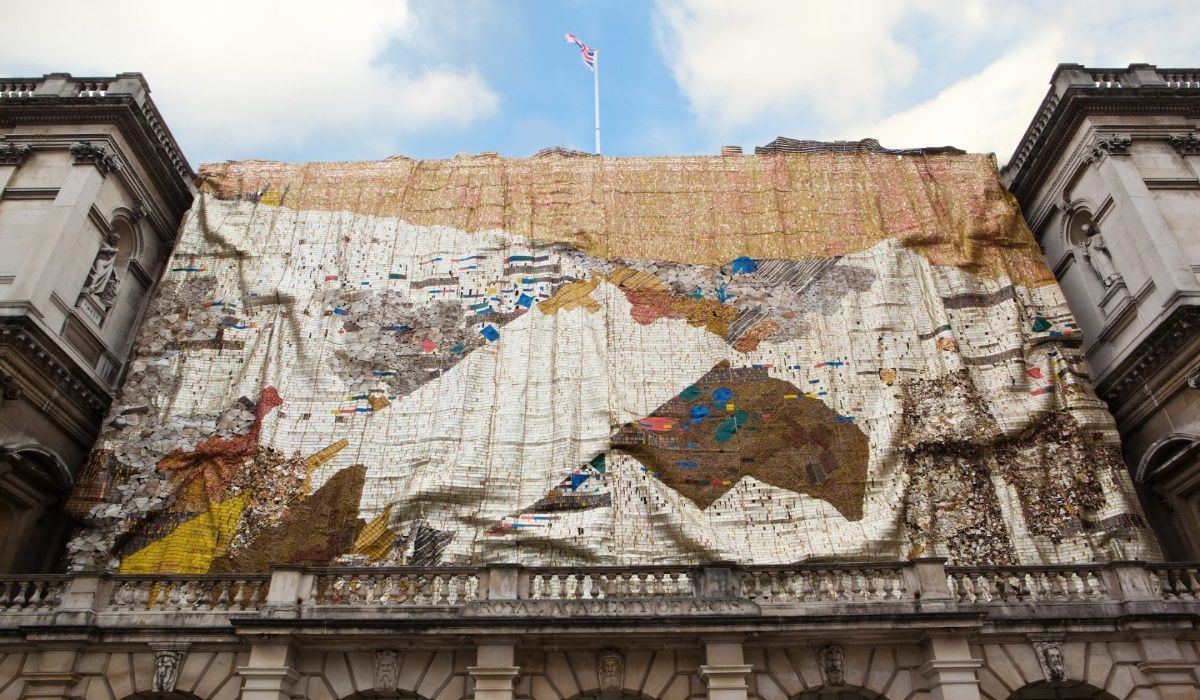Reduce, Reuse, Recycle. It’s a mantra we all try to follow, perhaps with varying levels of success. When we do it, its always in the pursuit of saving the planet never for something as glamorous as art. Perhaps unintentionally, Ghanaian artist El Anatsui has come to represent an appreciation of this mantra; somehow transforming our waste into the most stunning metal tapestries. Born in Ghana in 1944, he lives and works in Nigeria now. He is both a painter and sculptor, dealing with a variety of different materials, ranging from aluminum bottle caps, metal, driftwood, railway sleepers, milk tins, and wood.
His works explore contemporary issues but are deeply rooted in history and cultural significance. One key aim of his metal artworks is to shed light on the history of West Africa. The bottle caps sourced from alcohol that he uses represent a traumatic past of slavery. This connection makes more sense once you understand the context. Alcohol and other commodities were traded for slaves. Anatsui reflects on the exchange of people and objects as well as its effect on West African culture. There’s also a more contemporary relevance too, he explores the theme of consumption. He uses the ‘leftovers’ of bought goods, these materials often have a deep economic and social significance, especially in everyday life in western Africa.
In this way, he is influenced by his surroundings and a desire to explore Western Africa’s past and present. He transforms normal, simple, everyday objects, such as the bottle cap into large metal hanging sculptures. Through collection and processing, he shows that you can reuse what is considered rubbish and make it into something of value. Traditional African craft techniques and locally sourced materials are used. El Anatsui focuses on the form of his works as well as the material they are made of. You would’ve thought that since he uses metal, most of his works would be a collection of silver tones. But nope, he employs bright warm colors that remind us of his West African origins. The color and patterns we see in his artworks almost appear like a rippling piece of fabric. A massive patchwork quilt.
“… I have experimented with quite a few materials. I also work with material that has witnessed and encountered a lot of touch and human use … and these kinds of material and work have more charge than material/work that I had done with machines.” El Anatsui, in 2010
Most of Anatsui’s works are intended to challenge preconceived notions of sculpture. When we think of sculpture, we usually consider it as a rigid, fixed object, an old school Greek figurine or a contemporary collection of blocks. Anatsui challenges this by making his pieces malleable, dynamic and fluid. Some of them even spill onto the floor like a liquid. The most amazing thing is that each time any of his hanging metal works are installed, they have different wrinkles and creases, always changing never the same.
The scale of his works all tend to be quite large, in some cases, they are even designed to drape over the façade of buildings. The fact that these massive sheets of metal are so massive and are made up of the smallest pixels of color invites us to take a step closer. It’s only then we the tiny intricate copper wire connecting these metal plates that we are fully able to recognize the number of man-hours that went into creating it. El Anatsui can remind us that there’s beauty in the second hand. A lesson that we may have all needed a recap in.


